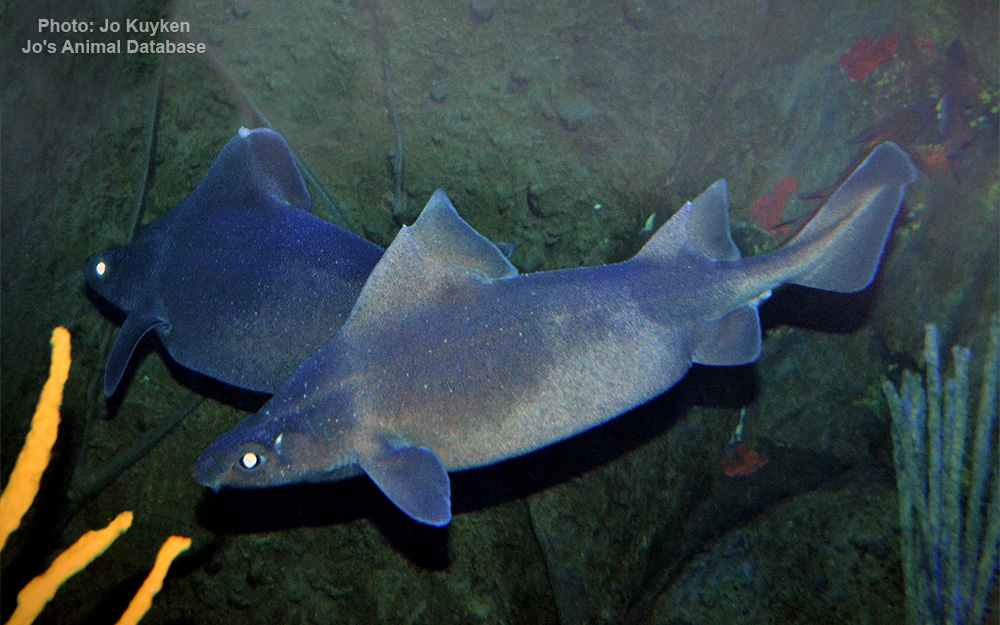Angular roughshark
(Oxynotus centrina)

Image source: Jo's Animal Database
Classification
General data
At birth, they are less than 25 cm (9.8 in) and they mature at about 50 cm (20 in).
Most records are of individuals less than 1 m (3.3 ft), but they can reach about 1.5 m (4.9 ft).
Their litter size is seven or eight pups off Angola to 23 in the Mediterranean. They have ridges over their eyes that expand into large, rounded knobs, which are covered with enlarged denticles – these are absent in other species of rough sharks. They possess very large spiracles that are vertically elongated, being almost as high as the length of their eyes. Their first dorsal spine is oriented slightly forward. They feed on worms, crustaceans, and mollusks.
Oxynotus centrina has a compressed body, triangular in cross section, with a broad and flattened head. The snout is flat and blunt. Just like all of the Oxynotus species, they have two relatively large dorsal fins that are sail-like, and no anal fin. Their color scheme is grey or grey-brown dorsally with dark blotched on its head and sides. However, one identifying feature is the light horizontal line below the eyes on the cheek.
Since it shares the northeast Atlantic with another species of Oxynotus, other distinguishing features include the extremely large spiracles, their dorsal fins, and their large dermal denticles above their eyes. Like most of the Oxynotus species, O. centrina has lanceolate upper teeth and blade-like lower teeth, with 12 rows of teeth on either side.
Oxynotus centrina usually moves by gliding on the bottom of the sea, sometimes hovering over the sandy or muddy surfaces of the seabed.
They occur in the eastern Atlantic from Norway to South Africa, including the entire Mediterranean. They may also occur off Mozambique. They prefer coralline algal and muddy bottoms on continental shelves and upper slopes at depths of 50 to 660 m (160 to 2,170 ft), but occur mostly below 100 m (330 ft). Studies of these sharks in the Mediterranean indicate they prefer to spend their times at depths of 60 to 600 m (200 to 1,970 ft).










